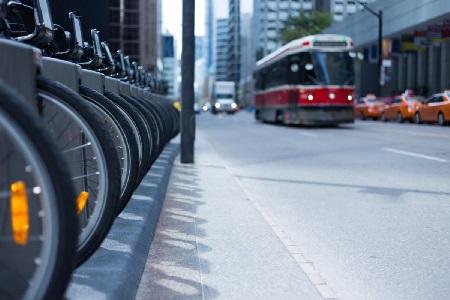Integrated and Sustainable Urban Transport Roundtable

Providing high quality and integrated transport requires actors to think in terms of entire end-to-end journeys. For example, a user’s experience of a public transport journey will include journey planning, accessing the service on foot or bicycle, fare payment, the comfort of the vehicle, and the ease of transfer between vehicles. In the past decade, two particular improvements in public transport journeys have been pursued in cities of a number of ITF member countries. Numerous cities have better incorporated bicycles into their public transport networks and/or introduced light rail transit (LRT) to improve journey comfort.
Bicycles can extend the catchment area of public transport services and can add capacity to constrained transport networks. To harness these advantages many cities have pursued bike sharing schemes, such as Paris’s Velib system, while others have focused on improving the ease with which owners of private bicycles can access public transport services, through “park and ride” facilities or even providing racks in/on vehicles. The Roundtable discussions will explore the different motivations for choosing one strategy or another, different approaches to governance, the demonstrated potential of different strategies for encouraging a shift to cycling and practical lessons from implementation.
Light rail transit (LRT) has also experienced a renaissance in recent years, just four decades after tram tracks in many cities were removed or paved over. However, this (re-) introduction of LRT has posed some physical and service integration complications that many cities lack expertise in resolving. For example, innovative street layouts may be required to balance transport and aesthetic considerations. In addition, successful introduction of LRT services requires careful consideration of integration: the possibility of sharing of infrastructure (buses being able to run in LRT corridors), service co-ordination (to minimise interchange times) and fare integration (not charging travellers multiple times to complete a journey).
Measuring an urban area’s progress towards public transport integration is crucial in understanding the success (or otherwise) of policies implemented and for providing impetus for further action. The metrics developed can in turn be significant in determining the outcome of assessment of alternative investment options. To be useful, performance measures should allow meaningful comparison across time and within a peer group. Urban transport sustainability is typically assessed by agreeing on and collecting a standardised set of indicators. The Roundtable discussions aimed to explore the viability of different ways of measuring integration of public transport as part of an overall set of urban transport sustainability indicators.